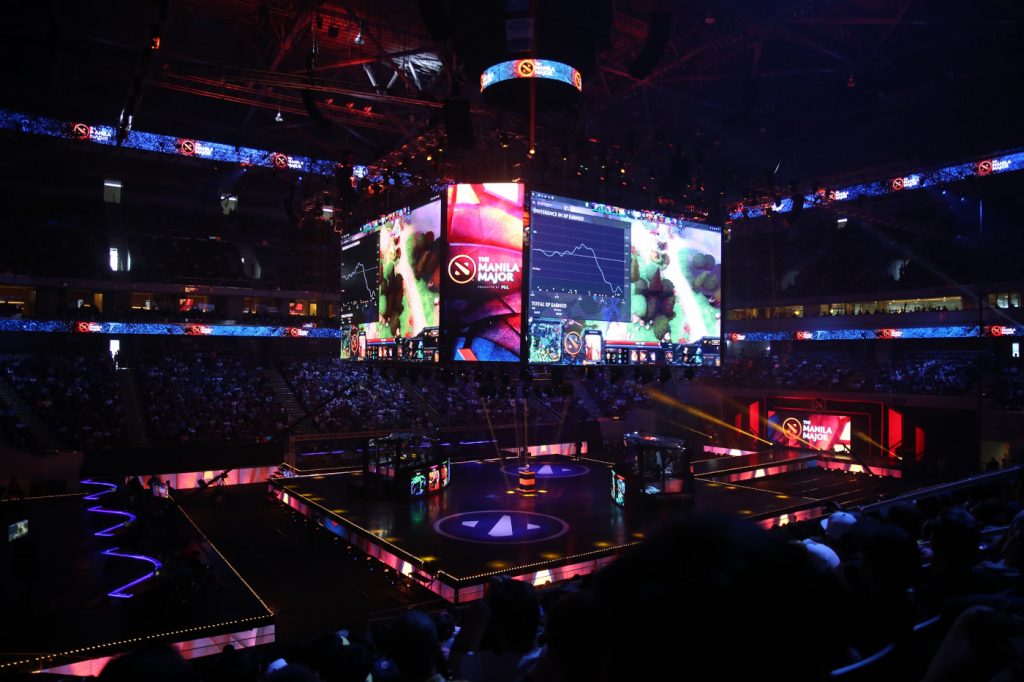Key considerations for in-person attendees and streamers.
Many factors go into the creation of a good live-event venue: sound and acoustics, general ambiance and even the comfort level of the seats. However, vision is the dominant sense for the majority of people; as a result, how we perceive the experience we have at a
venue is based largely on our visual cues.
It’s no coincidence that today’s stadiums and arenas are experiencing an increase in video upgrades. The past several years have seen the size of many display screens increasing in stadiums and arenas across the country. It has felt like some of our most well-known stadiums are competing to be deemed as having the largest video screen. In fact, venues such as Churchill Downs in Louisville KY, Texas Motor Speedway in Fort Worth TX, TIAA Bank Field in Jacksonville FL and Mercedes-Benz Stadium in Atlanta GA all feature screens that are among the top 20 largest stadium video screens in the world.
However, you don’t have to be one of the largest venues, or have one of the largest video screens, to understand that large screens and massive signage enhance the experience for all kinds of event-goers. (Remember that, these days, physical attendees are not the only audience to consider.) You also don’t have to have the same kind of budgets that the largest venues boast; smaller venues can also achieve a high-quality, versatile and futureproof workflow. Numerous products on the market right now will dramatically increase production value, streamline the distribution and help venues look to the future, and those products are more affordable now than they’ve ever been in the past.
It’s easier and more important than ever to make sure that stadiums and arenas are set up to produce the engaging content that attendees and viewers want. Those in charge of AV for stadiums and arenas should consider the following as they look to improve or upgrade the technologies within their systems.
• Camera angles: Various camera angles offer different perspectives for attendees, offering views beyond what’s possible from their seat. Cameras on the market today can be positioned inconspicuously so as not to disturb those in closer seats or the action in front of the camera, even as they capture engaging content for those sitting farther away. Essentially, the cameras bring the front-row experience to those sitting in the back. Some cameras are even remotely operable, meaning venues don’t have to have a cameraperson stationed at each point of capture. This saves money and resources, and it makes it easier to offer more camera angles than ever before.
• Image quality: Professional venues should keep in mind that image quality and the overall viewing experience are equally as important as the content itself is. High-quality images will keep viewers engaged in the game, performance or event happening in front of them; what’s more, they will affect people’s experience with and impression of the venue overall. Viewers want to see content that looks as good as—if not better than—what they’re used to seeing on their TV at home or their mobile device. Today’s technologies allow for affordable high-resolution video, so there’s no reason for someone to have a poor viewing experience at your venue.
• Scalability: With stadiums and arenas serving as multi-purpose venues that serve not only large sporting events but also concerts, ceremonies and other live events, a versatile video setup is of utmost importance. Each event will have different screen and signage needs. Thus, a video setup that can be scaled up or down to suit the needs of each individual event—from SD, to HD, to 4K, 6K, 8K and even 12K—will save money and keep operations running more smoothly.
• Streaming: Lastly, stadiums and arenas should strive to offer an excellent viewing experience for those who aren’t able to attend in person. Streaming is now more essential than ever before. A streamed event won’t provide the same experience as someone actually being there in person, but multiple camera angles, high-quality images and scalability can all come together to create a stream that makes the experience as close as possible to the real thing. The ability to deliver high-quality, interesting programming to those watching virtually will set venues apart; potentially, it can even add revenue.
It’s a tall order to make a massive venue feel more intimate, but, if you’re mindful of all the factors delineated, it is possible. Choosing video products that deliver on multiple levels will raise the production standard of any live event. Indeed, doing so could be the difference between patrons choosing to visit again—whether in person or virtually—and choosing not to. It could also be the difference between organizations choosing to host their event at your venue or choosing the better-equipped venue down the street.
All large venues must pay attention to the ever-changing technology needs of mass live events. As some venues begin to, or continue to, take the steps necessary to improve and upgrade with new and developing technologies, their peers will have to step it up to even the playing field, if not surpass the competition. As noted, although stadiums and arenas are widely known for hosting sports events, they’re also home to concerts, presentations, graduations, ceremonies and a number of other types of events. Although such events are not happening in droves at the moment, they will certainly return with time.
Accordingly, therefore, stadiums and arenas should take advantage of the ample opportunities they have to make their video experiences look and feel better than ever for in-person attendees and streamers.
To read more from Sound & Communications, click here.
